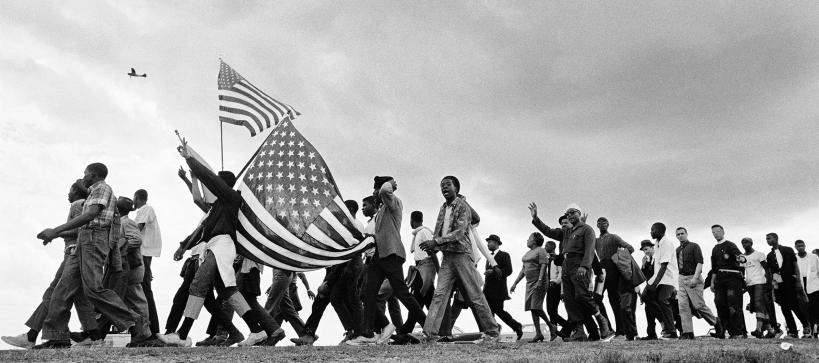
Photo by Matt Herron, Courtesy of The Center for Documentary Expression and Art
This Light of Ours: Activist Photographers of the Civil Rights Movement
October 19, 2023–February 25, 2024

Photo by Matt Herron, Courtesy of The Center for Documentary Expression and Art
October 19, 2023–February 25, 2024
See more than 150 photos taken by Movement insiders that reveal the vital work undertaken by a broad coalition of organizers and everyday people whose collective action changed America.
This exhibition was on view at the Skirball October 19, 2023–February 25, 2024
Find hope in our capacity for collective action. This Light of Ours: Activist Photographers of the Civil Rights Movement showcases more than 150 photographs that reveal the vital work undertaken by a broad coalition of young organizers and everyday people who fashioned a movement that changed America.
The exhibition highlights the work of nine photographers primarily affiliated with the Student Nonviolent Coordinating Committee (SNCC) in the 1960s: Bob Adelman, George “Elfie” Ballis, Bob Fitch, Bob Fletcher, Matt Herron, David Prince, Herbert Randall, Maria Varela, and Tamio Wakayama.
Unlike photojournalists who only reported on breaking news events from an outsider’s perspective, these nine photographers—of different ethnic, racial, religious, and geographic backgrounds—lived within the Movement and documented its activities by focusing on local people and socially-engaged students to portray community life as well as protest.
In addition to the photographs, the exhibition will include audio recordings of the photographers recalling their time in the Movement, as well as protest music, posters, newspapers, and informational booklets from the 1960s. These objects featured SNCC photographs, revealing how the organization used photography to raise awareness of their activism. The final section of the Skirball’s presentation highlights the enduring fight for voting rights taking place in Los Angeles and across the country, offering a way forward as our society continues to grapple with anti-Black violence and broad discrimination and disenfranchisement.
For the exhibition's presentation at the Skirball Cultural Center, Associate Curator and Collections Specialist Alissa Schapiro served as managing curator. Sarah Daymude and Natalie Riddick provided curatorial assistance.
This Light of Ours: Activist Photographers of the Civil Rights Movement is presented by the Center for Documentary Expression and Art and the Maltz Museum of Jewish Heritage.
Content Warning
Please be aware that some of the photographs in this exhibition contain disturbing images of violence, including police brutality and anti-Black hate speech.
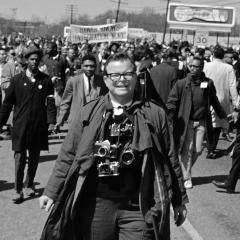
Bob Adelman (1930–2016)
Photographer Unknown, Courtesy CDEA
Working with the Congress of Racial Equality, Jewish photographer Adelman documented efforts to desegregate restaurants and bus terminals on Route 40 between Washington and New York. He went to Birmingham in 1963 with the Southern Christian Leadership Conference, where the images he captured garnered national and international recognition, He authored twelve books, including Mine Eyes Have Seen, a retrospective on the movement published in Life magazine’s 2007 “Great Photographers Series.”
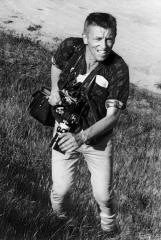
George “Elfie” Ballis (1925-2010)
Photographer Unknown, Courtesy CDEA
After working in Mississippi in summer 1964 for the Southern Documentary Project, Ballis returned to his California home and spent the next seven years documenting Cesar Chavez and the emerging United Farm Workers movement. He also produced several important documentary films, including I Am Joaquin, a Chicano film-poem, and The Dispossessed, the struggle of California’s Pit River Indians to regain tribal lands.
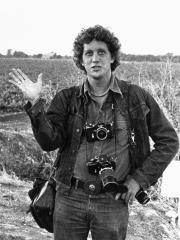
Bob Fitch (1939-2016)
Photographer Unknown, Courtesy CDEA
A Los Angeles-born activist and ordained minister, Fitch was 24 when he joined the Southern Christian Leadership Conference as a staff photographer in 1965. After nearly two years in the South, he spent the next two decades documenting social justice activities in California, including the work of Dorothy Day and the Catholic Worker houses of hospitality, and the efforts of Cesar Chavez and the United Farm Workers Union.
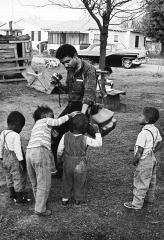
Bob Fletcher (b. 1938, Lives New York City and Clearwater, FL)
Photographer Unknown, Courtesy CDEA
After working for the Harlem Education Project in New York, Fletcher photographed for the SNCC in Alabama and Mississippi from 1964-68. Becoming interested in documenting African life and culture he worked on a documentary about Mozambique’s war of liberation, among other films shot on the continent. He later graduated from New York University's law school and became an attorney.
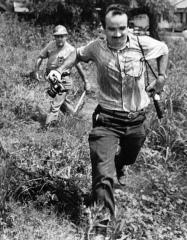
Matt Herron (1931-2020)
Photographer Unknown, Courtesy CDEA
One of the few photojournalists to bring his family with him, Herron covered the Civil Rights struggle for Life, Look and Time magazines while also providing images for SNCC. During the 1964 Freedom Summer he organized the Southern Documentary Project, and his 1965 image of a Mississippi policeman wrestling an American flag from a Black child won the World Press Photo Contest. His memoir, Mississippi Eyes: The Story and Photography of the Southern Documentary Project, was published in 2014.
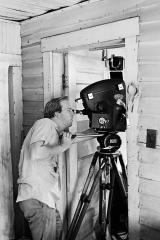
David Prince (1942-2015)
Photographer Unknown, Courtesy CDEA
The only full-time college student employed as a photographer in the 1964 Southern Documentary Project, Prince, along with writer Jerry DeMuth, was severely beaten by a Selma sheriff's posse at a voter registration site. That incident became notorious and led to a US Justice Department investigation. Prince continued to cover events in Mississippi until returning to school at Ohio University, where he later became a professor of film and a documentary filmmaker.
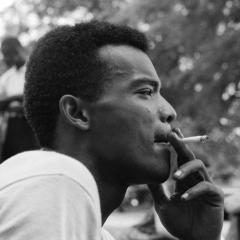
Herbert Randall (b. 1936, lives New York City)
Photographer Unknown, Courtesy CDEA
A Black and Native American photographer, Randall spent the summer of 1964 photographing Freedom Schools, voter registration drives, the Mississippi Freedom Democratic Party campaign and the people who served the movement. Returning to his home in New York, he received the Creative Artists’ Public Service Grant for Photography for 1971-72 and later consulted for the National Media Center Foundation. He helped found a New York-based forum for Black photographers.
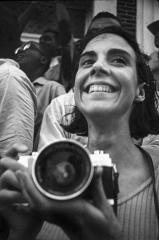
Maria Varela (b. 1940, lives La Puente, NM)
Photographer Unknown, Courtesy CDEA
A SNCC staff member from 1963-67, Varela specialized in photos illustrating the organization of economic cooperatives and voter registration campaigns. She later collaborated with Mexican American and Native American artisans and livestock growers to preserve pastoral cultures through sustainable development. She teaches about SNCC's organizing methods and legacies at Colorado College, where she is a visiting professor. She contributed to the collection Hands on the Freedom Plow: Personal Accounts by Women in SNCC.
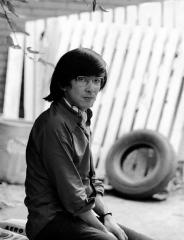
Tamio Wakayama (1941-2018)
Photographer Unknown, Courtesy CDEA
A Japanese-Canadian photographer who spent his childhood in a World War II incarceration camp, Wakayama skipped his final year of college to join the Civil Rights movement in 1963. He became a SNCC staffer in the Atlanta office, designing posters and fliers and managing the darkroom. In the summer of 1964, he worked as a field photographer in Mississippi. In 1978 he assembled the book A Dream of Riches: The Japanese Canadians 1877-1977.
In these recorded talks held at the Skirball, enjoy impactful and lively conversations with Skirball curators Alissa Schapiro and Vicki Phung Smith about the fall 2023 exhibitions This Light of Ours: Activist Photographers of the Civil Rights Movement, The American Library by Yinka Shonibare CBE RA, and RECLAIMED: A Family Painting. Navigate to these timestamps to specifically hear about each exhibition:
15:50—The American Library
25:56—RECLAIMED
37:56—This Light of Ours
Purchase the corresponding catalog, This Light of Ours: Activist Photographers of the Civil Rights Movement, available online or onsite at Audrey's Museum Store.
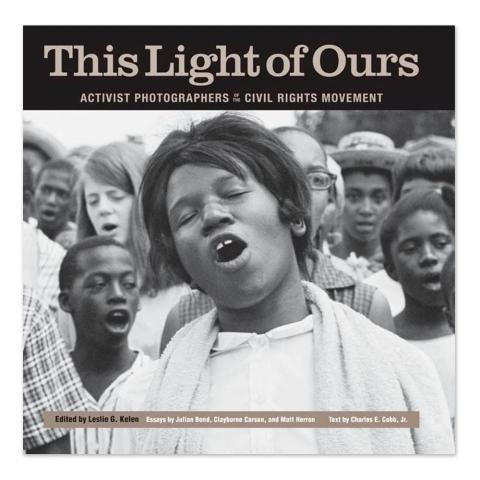
Our school tour, This Light of Ours: Looking Back, Looking Ahead, gives students an opportunity to immerse themselves in history, study major turning points that shaped the modern world, and find hope in our capacity for collective action.
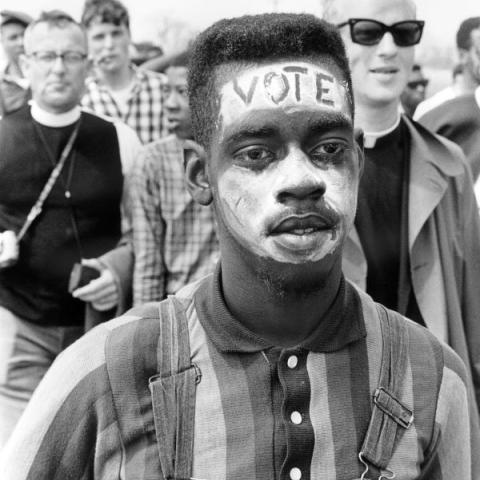
Industry leaders renew alliance between Black, Jewish communities through art
Spectrum News 1 SoCal | October 24, 2023
Skirball shines ‘Light’ on Civil Rights photographers
Beverly Press and Park La Brea News | October 25, 2023
Skirball’s Exhibit ‘This Light of Ours: Photographers from the Civil Rights Movement’ Inspires Hope
Los Angeles Sentinel | October 26, 2023
This Light of Ours: Activist Photographers of the Civil Rights Movement and its related educational programs at the Skirball Cultural Center are made possible by generous support from the following donors:
Margaret Black and John Ptak
Stephanie and Harold Bronson
Nancy Sher Cohen and Robert Neil Cohen (z”l)
Gelila Assefa Puck
Resnik Family Foundation
Steve Tisch Family Foundation
Willis Wonderland Foundation
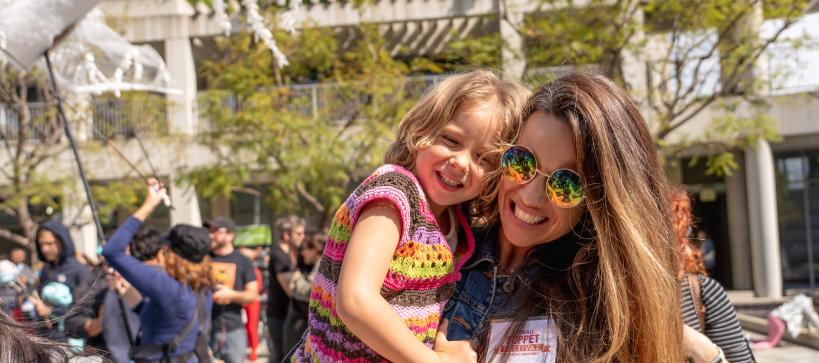
Promote justice and build community while enjoying FREE admission, exclusive programs, and more.